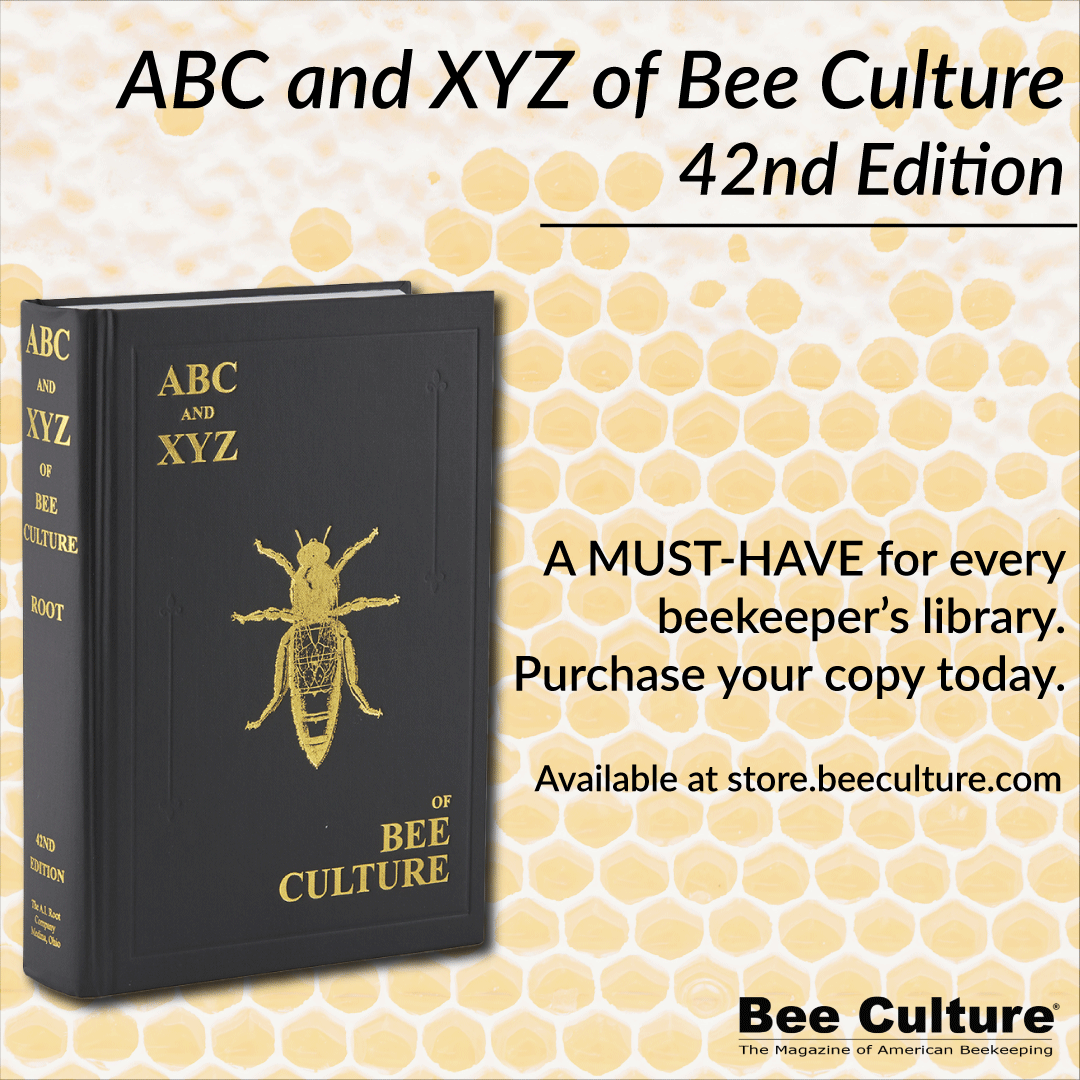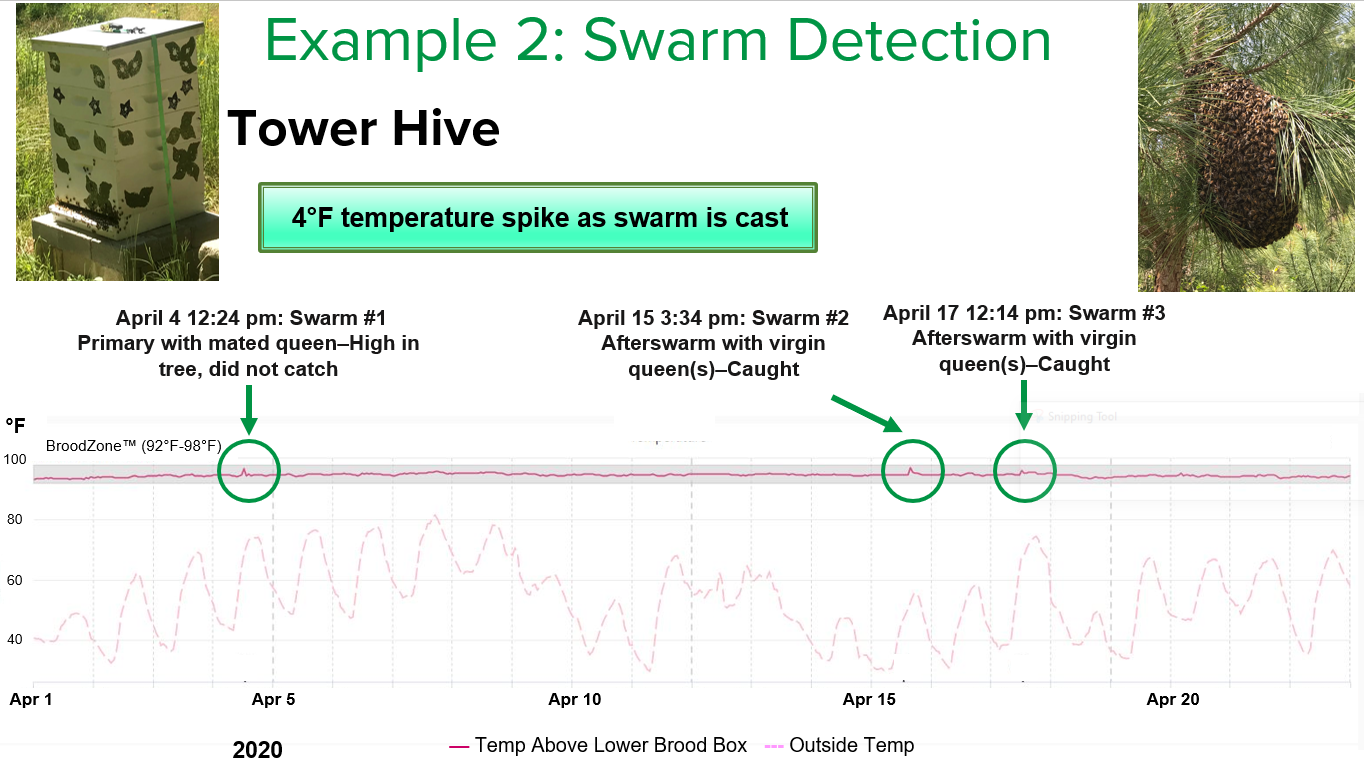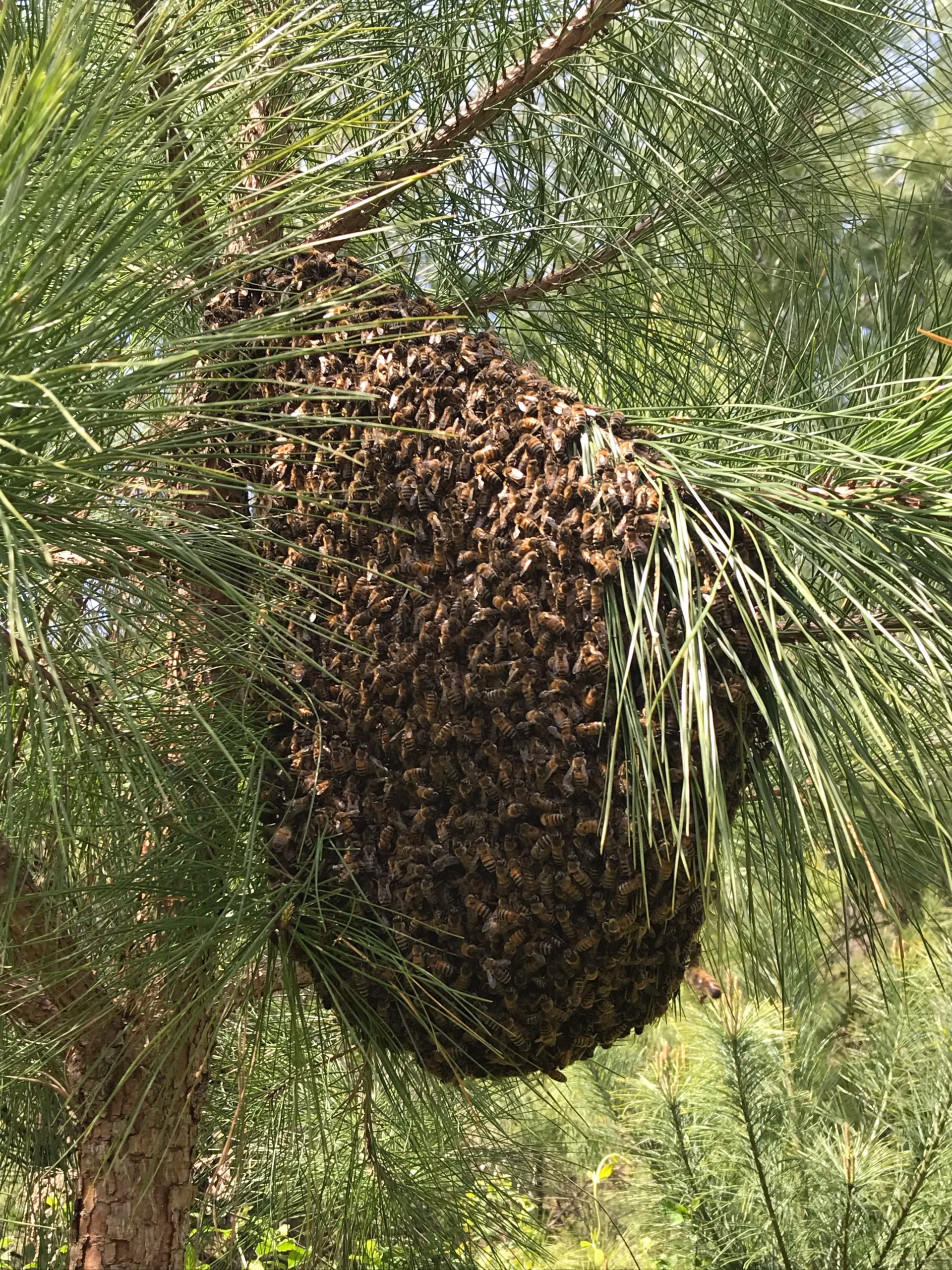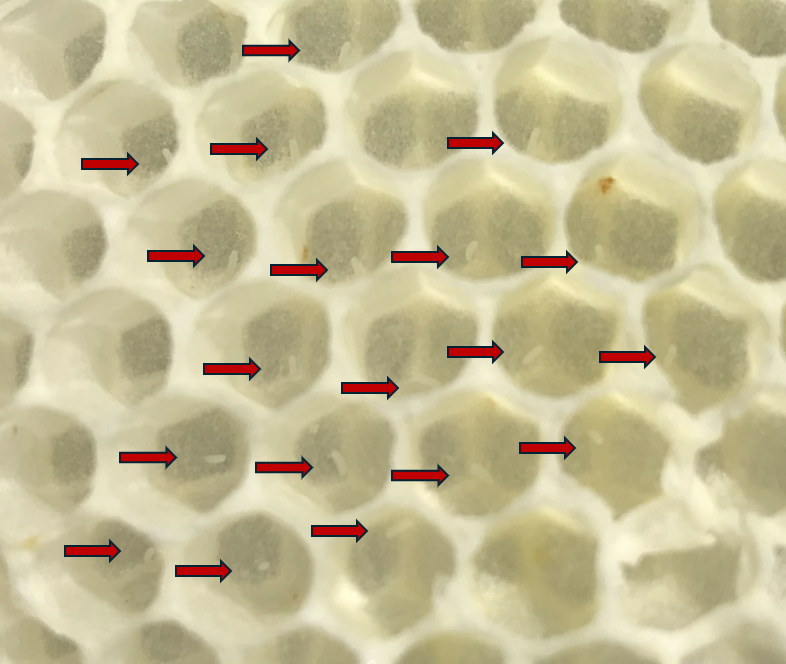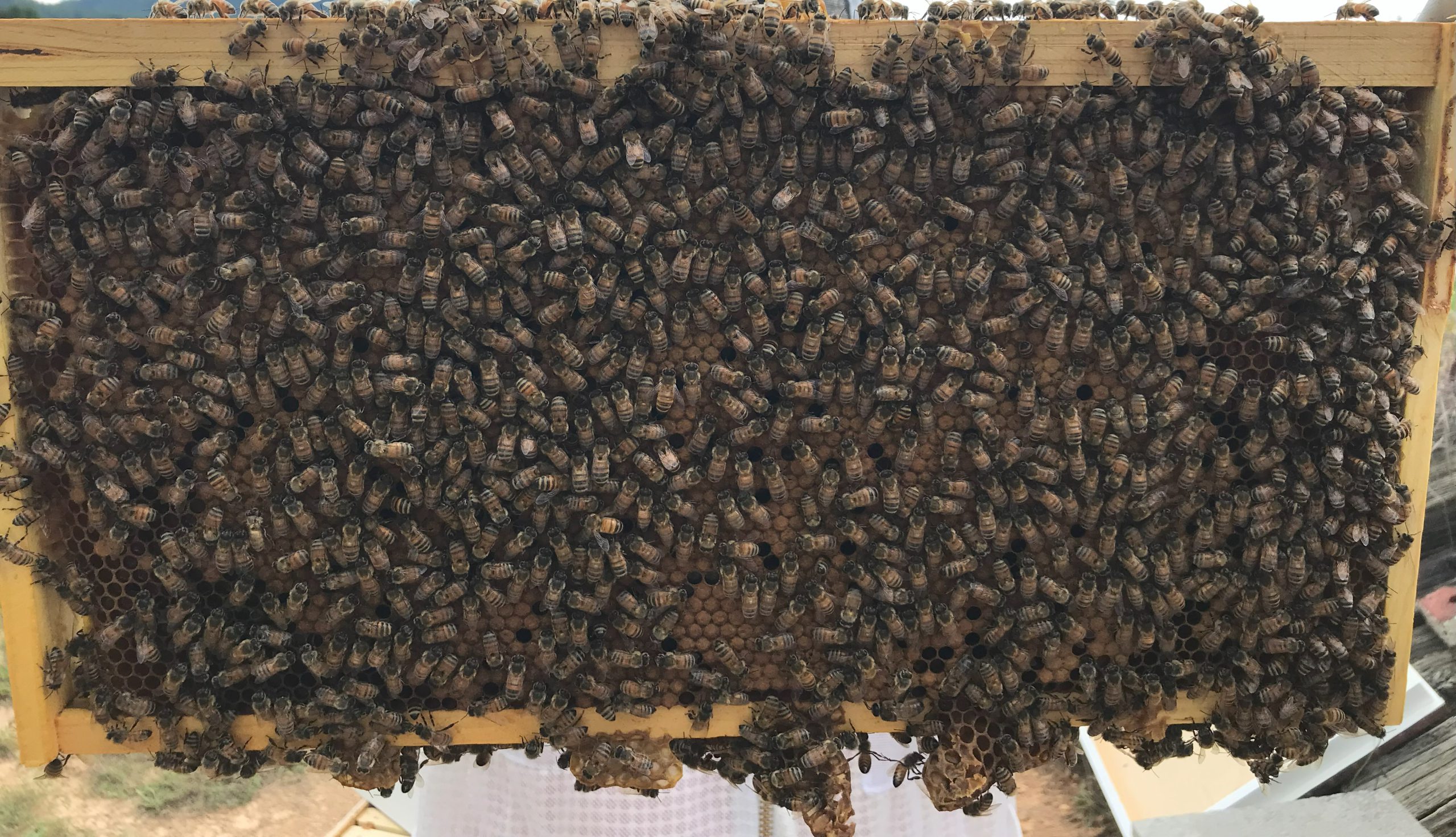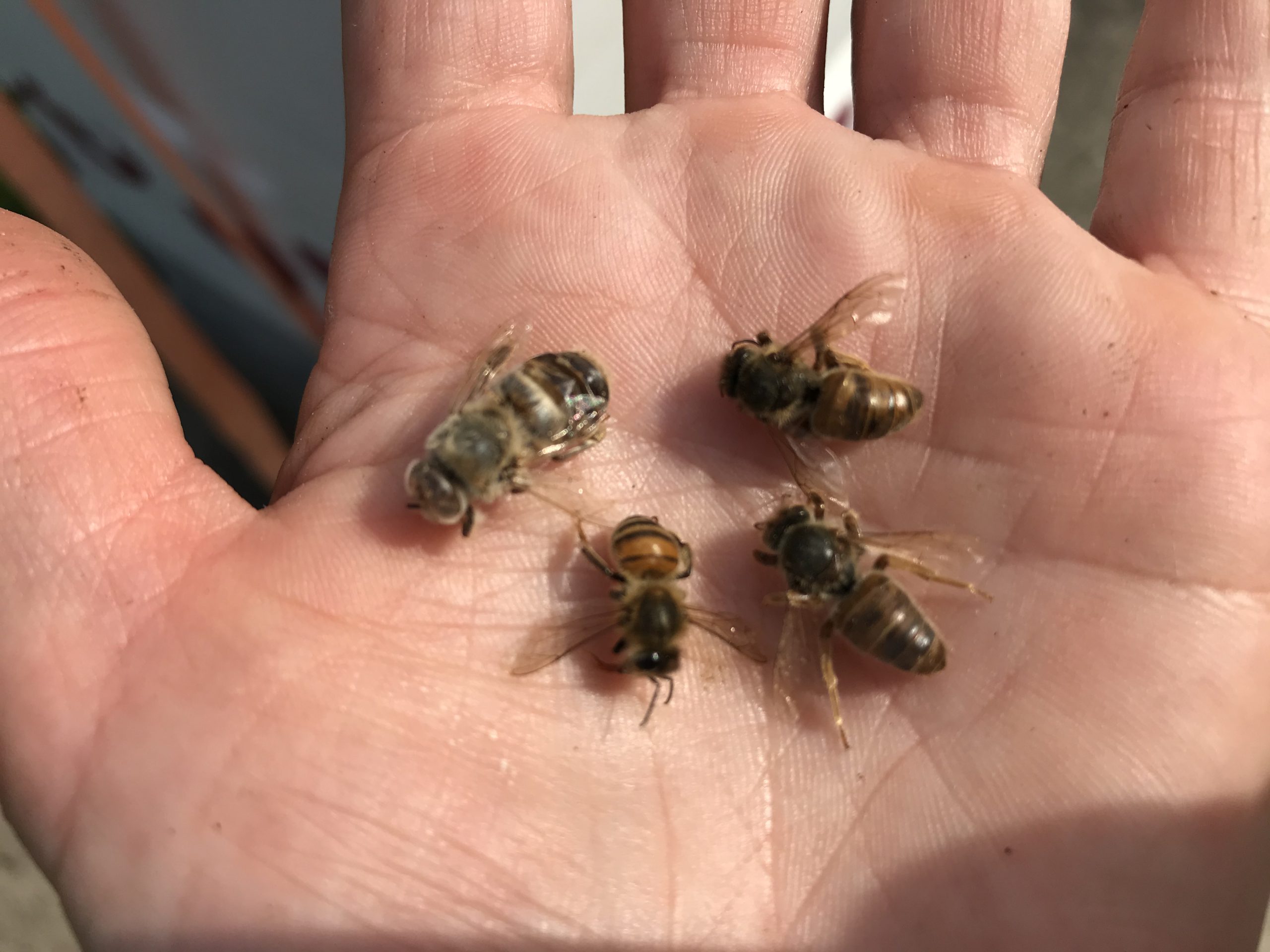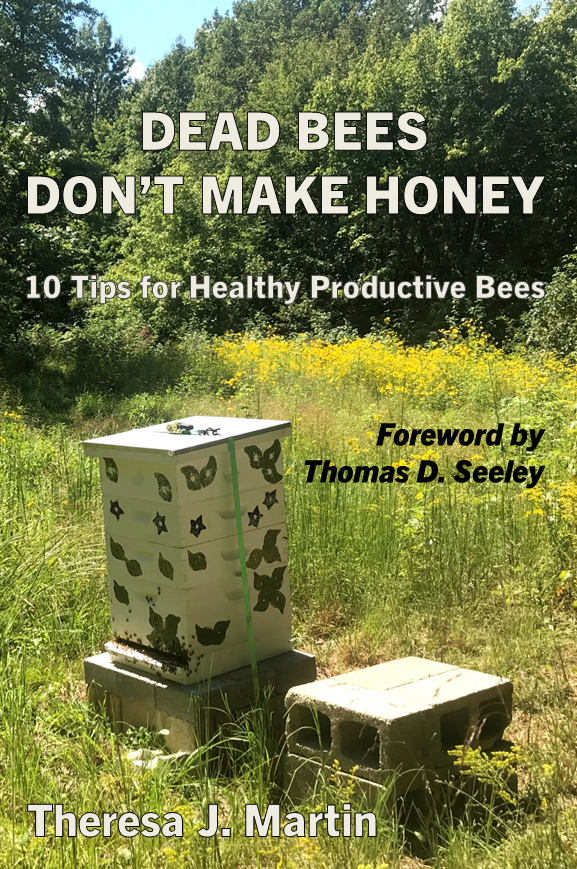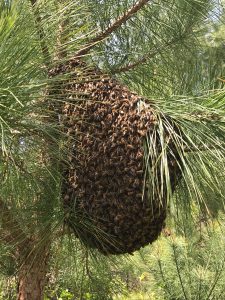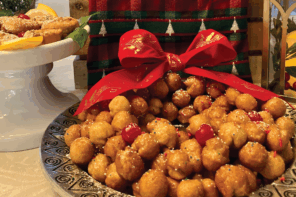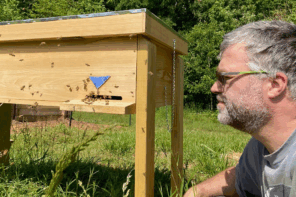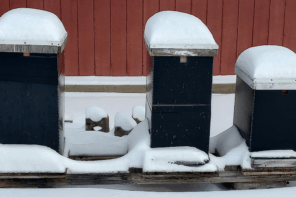Click Here if you listened. We’d love to know what you think. There is even a spot for feedback!
Read along below!
Part 2 – Take the Temperature of Your Colony:
Swarm Detection
Theresa J. Martin
I begin by clarifying that BroodMinder does not compensate me in any way for my statements about its product. What I write is my uninfluenced opinion based solely on my experience.
In this four-part series, we are exploring how temperature sensors provide the beekeeper with actionable information that improves colony outcomes. Last month, we reviewed Example 1, which demonstrated how the BroodMinder T2SM temperature sensor technology alerted me that one of my colonies was queenless and assisted me in monitoring their return to queenright status.
This month, we explore Example 2, which is how temperature sensors indicate that a colony swarmed and ways this knowledge improves beekeeper actions.
Temperature Increase During Swarming
Swarming is colony reproduction at the superorganism level and is a biological imperative for honey bees (Apis mellifera) to propagate the species. Temperature is an indicator that a colony has swarmed. There is a discernible 4°F increase in temperature that coincides with when the swarm exits the hive. The academic research indicates this temperature increase is likely due to the departing bees warming up their flight muscles at the same time.1 The BroodMinder T2SM sensor can detect the temperature increase and alert the beekeeper that their colony has swarmed.2
Swarm Example
One of my colonies called Tower hive swarmed three times in the Spring of 2020 as shown in Figure 1. On April 4, 2020 at 12:24 p.m., Tower hive swarmed as indicated by the 4°F increase in internal temperature. This was the first swarm from Tower hive that Spring, so it was the primary swarm with the mated overwintered queen. This swarm bivouacked high in a tree where I could not retrieve them safely. I caught a swarm in a bait hive that coincided with the departure of this swarm from their bivouacked location, but I was unable to determine with certainty that it was the same swarm.
Eleven days later on April 15 at 3:34 p.m., Tower hive swarmed again, casting an afterswarm that I caught in the bivouacked stage. Two days later on April 17 at 12:14 p.m., Tower hive cast a third swarm — the second afterswarm — which I also caught while bivouacked.
Biological Imperative
Much has been written explaining the conditions that lead to swarming and techniques to prevent it. Because it is the method by which honey bees propagate their species, despite some beekeeper’s best effort to prevent it, colonies may swarm anyway (Figure 2). There are times when a beekeeper suspects one of his or her colonies swarmed, but cannot find the swarm in the bivouacked stage because the cluster is too well hidden, or the swarm already departed to their chosen home. The BroodMinder T2SM sensor removes much of this uncertainty and enables the beekeeper to more efficiently execute actions appropriate to their beekeeping goals.
Original Colony
When a primary swarm is cast, some beekeepers will be interested in preventing afterswarms. The sensor lets the beekeeper know which colony swarmed and when, giving the beekeeper targeted information to inspect to destroy all swarm queen cells except one, thereby making it less likely that the colony will cast one or more afterswarms.
Knowing when a colony swarmed helps the beekeeper time an inspection to verify the original colony has a laying queen and that she is well-mated. The new daughter virgin queen will emerge 1–7 days after the primary swarm departs. She will take about one week to mature, a few additional days of good weather to go out on one or more mating flights, and about three more days to move the sperm to her spermatheca. Then, she will begin laying eggs (Figure 3). Worker brood is capped 8 days later. While there is significant variability in the timing of these various stages, the earliest time to verify the queen is well-mated is around 4 weeks after a primary swarm (Figure 4).3 Finally, as detailed in last month’s article, the beekeeper can also use the BroodMinder sensor to monitor queen replacement progress, due to brood nest thermoregulation.
Caught Swarms
When a beekeeper catches a swarm from their own colony, knowing if it is a primary or afterswarm indicates the optimal time to do an inspection to verify the caught swarm has a properly mated queen. In a primary swarm, the overwintered mated queen usually begins laying immediately, or as soon as drawn comb is available.
Afterswarms often contain multiple virgin queens. The virgin queens seek each other out and kill each other until, usually, only one virgin queen remains (Figure 5). The remaining virgin queen will go out on one or more mating flights on days of good weather, take about three days to move the sperm to her spermatheca, then begin laying. Therefore, the elapsed time is at least two weeks from when the afterswarm is caught to when capped worker brood will be visible.4
Improved Colony Health and Productivity
Honey bee colonies have an imperative to propagate their species via swarming. Knowing when our colonies swarm is valuable information we can use to better support our bees.
Next month, we will explore Example 3, which shows the temperature sensor depicting biological disruption during three Varroa destructor organic treatments and how the sensor assists the beekeeper in monitoring colony recovery post treatment.
Theresa J. Martin is the author of Dead Bees Don’t Make Honey: 10 Tips for Healthy Productive Bees, which includes a Foreword by Dr. Thomas Seeley. Her book also provides ten examples of the value of BroodMinder temperature sensors. Theresa has achieved 99% colony survival and honey production that is twice the local average in her seven years as a beekeeper, with 20–25 colonies in Kentucky. She is a Cornell Master Beekeeper, 2024 Kentucky State Beekeeper of the Year, and Vice President of the Kentucky State Beekeepers Association. Theresa can be reached at theresa@littlewolf.farm
REFERENCES
1Zacepins et al. (2016) detected the 4°F increase in temperature on nine swarms using a temperature sensor placed just above the brood nest. The study hypothesized that this temperature increase is due to the departing workers warming up their flight muscles at the same time. Ferrari et al. (2008) concurred in a study that identified an increase in sound combined with an increase in temperature as an indication that a colony is in the process of swarming.
Ferrari, S., Silva, M., Guarino,M., Berckmans, D. (2008). Monitoring of swarming sounds in bee hives for early detection of the swarming period. Computers and Electronics in Agriculture, 64 (1), 72-77, ISSN 0168-1699 https://doi.org/10.1016/j.compag.2008.05.010
Zacepins, A., Kviesis, A., Stalidzans, E., Liepniece, M., Meitalovs, J. (2016). Remote detection of the swarming of honey bee colonies by single-point temperature monitoring. Biosystems Engineering, 148, 76-80. https://doi.org/10.1016/j.biosystemseng.2016.05.012.
2See www.broodminder.com for more information. I am not compensated by BroodMinder in any way, so what I share is my uninfluenced experience.
3For the past 50 years, Dr. Thomas Seeley has studied swarming and reports his findings in engaging detail in several of his books. Seeley, T. D. (2010). Honeybee democracy. Princeton University Press. Seeley, T. D. (2019). The lives of bees: The untold story of the honey bee in the wild. Princeton University Press. Seeley, T. D. (2024). Piping hot bees & boisterous buzz- runners. Princeton University Press.
4Koeniger et al. (2014) provides a comprehensive and fascinating book on honey bee mating biology and timelines. Koeniger, G., Koeniger, N., Ellis, J., Connor, L. J. (2014). Mating biology of honey bees (Apis mellifera). Buschhausen.


